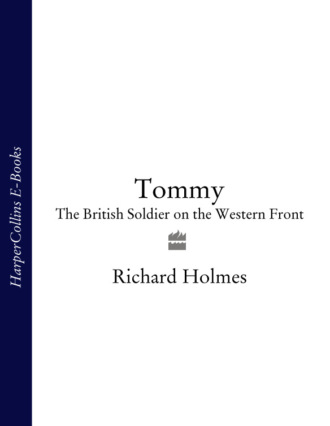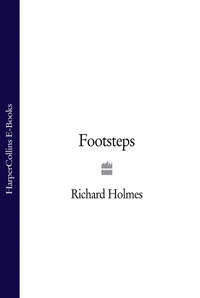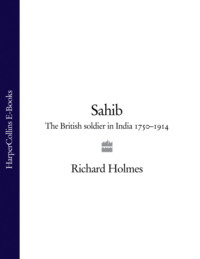
Полная версия
Tommy: The British Soldier on the Western Front
Army officers had to buy their own uniforms. I. G. Andrew, commissioned from the ranks into the Cameronians in 1916, was delighted to get a uniform grant of £50 and to find himself on 7s 6d a day. The Bond Street outfitters Pope and Bradley (‘By Royal Appointment to HM the King of Spain’) charged from £3 13s 6d for a service dress jacket and £2 12s 6d for Bedford cord breeches (buckskin strapped). A waterproof trench coat cost £5 15s 6d, though there was a running debate as to whether a Burberry was a better bet than a stout oiled cotton coat. Maxims of London compromised, advertising a coat interlined with oiled silk for just £4 10s. A British warm, a square-cut knee-length coat with leather buttons, could be had for three or four pounds.
It was understood that most pre-war regular officers would not be able to live on their pay: an infantry officer in an unfashionable regiment might rub along on a private income of £160 a year. In 1909 a territorial infantry subaltern, training part-time, pocketed 5s 3d a day and the lieutenant colonel commanding his battalion 18s, both rather less than their regular equivalents. In 1918 a gunner lieutenant received 10s 6d a day, and ‘with field allowances, etc, as long as I’m out here, I’ll be getting nearly £250 a year’.7 Officers habitually carried cheque books into battle so that they could pay for home comforts if they were captured: often a cheque drawn on Cox & Kings, in Germany, would find its way back via Switzerland, providing families with welcome news.
Soldiers’ pay was low, with an infantry private beginning on 1 shilling a day and a Royal Horse Artillery Warrant Officer picking up 6 shillings. A complex system of additions, via proficiency pay and suchlike, and deductions for things like ‘barrack damages’ complicated army pay, and Gunner Bill Sugden ruefully told his fiancée that at the end of the process ‘you end up with nothing at all’. He was fortunate because his employer, the decent Walter Heppenstall, topped up his army pay by sending his mother 5s a week. King’s Regulations established fines for drunkenness at 2s 6d for the first offence and 5 shillings for the second, rising to a punitive 10 shillings if the offence had been committed within three months of a previous lapse.
On the continent men were paid in local currency, and although exchange rates varied, a franc was worth 10d in mid 1916, and there were twenty-five to the pound at the end of the war. Transactions were complicated by the fact that while Banque de France notes were good throughout the country, small-denomination notes issued locally were met with a curt pas bon ici outside their area of origin. In 1917 a Christmas turkey, at 3s 2d a pound, cost 30 shillings, arguably better value than an up-market Parisienne lady of the night who charged a subaltern £8 for the pleasure of her company, leaving him to muse on the cost of living – and the cheapness of death.
PROLOGUE: TOMMY ATKINS
In 1815 a War Office publication showing how the Soldier’s Pocket Book should be filled out gave as its example one Private Thomas Atkins, No. 6 Troop, 6th Dragoons. Atkins became a sergeant in the 1837 version, and was now able to sign his name rather than merely make his mark.
By the 1880s the expression ‘Tommy Atkins’ was in wide use to describe the prototypical British soldier, and Kipling’s poem Tommy summed up the nation’s ambivalence about her defenders.
… Then it’s Tommy this, an’ Tommy that an’ ‘Tommy, ’ows’s your soul?’ But it’s ‘Thin red line of ’eroes’ when the drums begin to roll …
… For it’s Tommy this an’ Tommy that, an’ ‘Chuck him out, the brute!’ But it’s ‘Saviour of ’is country’ When the guns begin to shoot; An’ it’s Tommy this, an’ Tommy that, an’ anything you please; An’ Tommy ain’t a bloomin’ fool – you bet that Tommy sees!
During the First World War the nickname was widespread, with derivatives like Tommy cooker, for a small trench stove, talking ‘Tommy’, to describe other rank repartee, or even ‘Tommyness’, to define certain attitudes and behaviour. When British and German soldiers yelled greetings or insults across No Man’s Land it was always ‘Fritz’ and ‘Tommy’.
A corporal writing in 1914 caught the man in all his lights and shades: ‘Sometimes Tommy is not a pleasant fellow, and I hated him that afternoon. One dead German had his pockets full of chocolate. They scrambled over him, pulling him about, until it was all divided.’ An engineer officer saw a large Frenchwoman fall into a canal, to be tugged to the bank by ‘two tommies’ who, in their eagerness to help, pulled her dress up over her head, demonstrating that knickers were not then universal in rural France. The expression was, of course, prohibited. A divisional commanders’ conference in October 1915 affirmed that: ‘The use of the word “Tommy” to be absolutely barred. The term is never permitted in a good regiment.’
The order had as much effect as so many others, and the nickname persisted, sometimes as Tommy, sometimes as Atkins, and once, memorably, as ‘Mr Atkins, gentleman’, used by an officer who saw soldiers helping refugees with gentleness and generosity. Nicknames are not always popular with their recipients, and such was the case with Tommy. Many soldiers felt patronised by it, and its English implication grated on Scots, Irishmen and Welshmen. But Sergeant Charles Arnold, himself a quintessential Tommy, declared that:
Tommy Atkins – full private – is, when all is said and done, the one who won the war. He won it by sheer dogged pluck … When is something going to be done for the man who isn’t a general or a guardsman or an Anzac, nor even a London Scot but just a clodhopper from Suffolk, or Devon, or Durham – the man who obeyed orders and stuck it out? Of this man little was heard, possibly because he had a habit of going into places a thousand strong and coming out a remnant of a hundred and fifty or so. Dead men tell no tales of their own glory.
ZERO HOUR
Even his white cotton long johns, the last resort of comfort and dignity, are soaked by the mud he has been lying in for the past half hour. Although it is a fine night with bright moonlight, there is little promise of spring this morning of 2 April 1917, and the winter, the worst anyone can remember, still grips the front line as it snakes down from Arras towards Bapaume like a slimy and malevolent old serpent. The cold has its merits, for it makes lice less lively: there is scarcely a man within three miles of the front who is not aware of lice busy at his armpits and crotch. Corporal Thomas Atkins is lying towards the right-hand end of a line of eighteen similar figures, nine of them in his own section, on the western edge of a long spur with the village of Croisilles, houses roofless and walls gaping, but, unlike so many villages further west, still just recognisable as the little agricultural community it once was, on its far side. They are in No Man’s Land, with the rusting zigzags of the German wire out of sight in front of them. Behind them is another similar line: this little block of one officer and forty men constitutes No. 1 Platoon, A Company, 2nd Battalion The Queen’s Royal West Surrey Regiment.
To its left is No. 2 Platoon, looking much the same but, (for this is ‘Dozy Two’, the despair of the company sergeant major and a risk to all decent men) sounding noisier as Lieutenant Wills, its long-suffering commander, adjusts something that sounds, across the chilly night, like a sack of scrap metal. It can only be Private Desmond, the company idiot, who has unfortunately not been left back with the transport where he can do no harm to himself or others. There are worse places to be on this long morning, thinks Thomas Atkins, and with No. 2 Platoon is one of them.
Atkins is twenty-five and unmarried, and was a butcher’s roundsman in Peckham before he enlisted in late October 1914. He joined the army because everybody else was doing it, and he did not want to miss the excitement. And he chose the Queen’s because Jack Chamberlain, a roundsman with the same firm, had an uncle in the regiment, and told Thomas that its cap badge, the Paschal lamb, was the finest in the army. That was enough for a single train ticket to Guildford, and a long walk up the hill to Stoughton barracks, where a sergeant thought that there might just be two vacancies. Getting into the army was easier than getting to France, and it took three months of basic training – shooting on Ash Ranges and route marches along the Hog’s Back to Farnham – and another three of hanging about the depot before his name appeared on a typewritten list fluttering outside the orderly room. His draft, two officers and fifty-eight men, marched to Guildford station and went by train to Southampton. An overnight crossing in a cattle boat took them to Le Havre, whence they were shuffled by railway to an infantry base depot at Etaples, and then posted to the 2nd Battalion, out of the line near Poperinghe, behind Ypres.
Having a chum in the same draft helped, and he recognised some NCOs from Stoughton. There were more decent blokes than bad bastards: any section had three or four good men, as many average, and one or two walking disasters, usually weeded out and sent off to the trench mortars in one of their periodic appeals for men. Officers were recognisably different in style and substance, and there were still enough pre-war regulars to give the battalion an old army feel of Blanco and brickdust.
The pattern of battalion life, with rotation between the front line, reserve trenches and rest billets (usually with more work than rest), came easily to Atkins. There was no sense in fighting what you couldn’t change. Food was regular, if predictable, and there was not much to spend your pay on but omelette and chips, accompanied by thin French beer or sharp white wine. Two shillings a week went home to his mother. The rest, increasing from a private’s miserable 1 shilling a day to a corporal’s more respectable 1s 3d in July 1916, as Somme casualties created vacancies, went straight into his belly. He was shocked the first time he was shelled, and profoundly surprised the first time he was sniped at: rifle fire was so much more personal, and it seemed odd that a German he had never met should try to kill him.
By this April of 1917 he has become familiar with death and wounds, with enough of his friends dead to be aware of his own mortality but not so many lost as to make him obsessed by the risks he must run. He knows his job, thinks himself good at it, and believes that his superiors think so too. The only drawback to the promotion that cannot be far away is that it will make it harder for him to see his mate, Corporal Jack Chamberlain.
Further back down the gentle slope, towards the barbed wire in front of the British front-line trench, are Nos 3 and 4 Platoons, the remainder of A Company. Shiny A is the battalion’s right-forward company. It is to attack at zero hour, 5.15 that morning, with B Company on its left and C and D Companies behind. The two rear companies, in the British front line and the communication trenches just behind it, will advance in section worms, little columns which will make them easier to control as they move forward, passing through the first wave of attacking companies to consolidate the captured ground.
The layout of the morning’s plan is quite clear in Atkins’s mind. Five minutes before the attack British field artillery will shell the German front line, while heavier guns will reach out more deeply in an effort to prevent the German artillery from responding effectively to the SOS rockets which their infantry will be sure to send up. As the advance begins the artillery will fire a creeping barrage, moving 100 yards every three minutes. Atkins knows that he and his men must ‘lean on the barrage’, leaving no more than 50 yards between the shell bursts and their advancing line. The trick is to arrive on the German front line, where the railway embankment runs across the front of the village, before its garrisons have emerged from their dugouts. Anyone who remembers the opening stages of the battle of the Somme the previous summer knows that it is better to risk losing men from the occasional shell that bursts short than to allow the barrage to spit and crack its way across the landscape too far ahead of the infantry, giving the Germans time to emerge to man their surviving positions and tuck machine guns into fresh shell holes.
The battalion is to take the German front-line trench and the embankment behind it, and then form a defensive flank facing north-east while the other three battalions in the brigade gain more ground. Brigadier General Hanway Cumming, the brigade commander, in a dugout a mile and a half further back, would tell us that the 21st Division on the left and the 4th Australian Division on the right will also be attacking as part of a larger plan conceived by 3rd Army. But this is not a matter for Atkins. He has seen the divisional commander on two occasions, but could not tell us that he is called Major General Herbert Watts and will soon have his reputation for being a very competent operator recognised by a knighthood. Getting to the railway embankment with skin intact will be quite enough for Atkins this morning, and the divisional plan is veiled from him in the mists of higher strategy. His men are to take the German front-line trench, and then work their way along it to the right until they meet the 22nd Manchesters, their right-hand neighbours. The company commander, with his unhappy facility for making the simple complicated (he was a lawyer in another life, which may explain it), calls it ‘effecting a junction’.
An artillery forward observation officer and his two signallers will move up with the company, the signallers unrolling cable as they go to maintain telephone communication with the guns. Goodness knows how long it will last, for unburied cable is easily cut by shellfire or by the iron-rimmed wheels of wagons. The gunner subaltern, warned by his commander that his job is to stay alive as long as he can to keep in contact with the guns, is not at his best. Like most officers in this part of the field he is dressed as a private soldier, and Private Desmond, perhaps entirely innocently, has already asked him: ‘Spare a fag, cocker?’ Although Desmond was put in the picture by an outraged signaller, it was not a good start for any gunner’s day.
Corporal Atkins’s little band of nine is much the same as any other British section in France this chilly morning. Although this is in theory a regular battalion, there is actually only one regular in the section. Private Sammy Jacques, with his rheumy eye, droopy moustache and South African War medal ribbons, resolutely does no more and no less than his duty, honouring the oath he took, half a lifetime ago, to ‘defend Her Majesty, her heirs and successors, in person, crown and dignity, against all enemies’. Although Atkins is nearly half his age, Jacques always properly calls him ‘Corp’, and never trades on his long service – except to lace his language with the impenetrable patois of the old India hand for whom a rifle is always a bundook, a girl a bint and a bed a charpoy. He is no problem out of the line, for he drinks to get drunk, and goes straight from upright and thirsty to horizontal and silent: no unseemly shouting, brawling or resisting the guard.
Atkins’s second-in-command, rejoicing in the rank of temporary, unpaid lance corporal, is Henry Adnam, a solicitor’s articled clerk and public school man who volunteered in late 1915, not long before conscription came into force. Had he joined a year before he might have got straight in with a commission, but those easy days have gone, and if he wants one now he will have to prove himself on mornings like this, and seems in a fair way to be doing so. There are four long-standing members of the section, Abraham, Bertorelli, Jarvis and Wolverton, all also from south London, a reflection of the regiment’s pre-war recruiting base. They are known quantities and men of proven value – Jake, Bertie, Jackie and the Wolf amongst themselves, and to Atkins too, when the presence of an officer does not impose formality. Their preference for holding rations and food parcels in common is tinged with disregard of the property rights of those outside the charmed circle. If the company finds itself diffy (that is, deficient) of any of its stores when they are next checked by the regimental quartermaster sergeant, the Wolf will be let out to prowl and the missing items will be ‘found’, perhaps with file marks where serial numbers used to be.
The remaining three members of the section, Arlington, Kersley and Pryce-Owen, are recent arrivals, young 1916 conscripts drafted in through Etaples to replace men killed or wounded in the steady low-level attrition of a winter’s line-holding. Arlington is from Middlesbrough, Kersley from Shaftesbury and Pryce-Owen from North Wales. Nowadays men are sent forward from the base without much regard for cap badge or local origin: these three became Queensmen at Etaples, and, as Jacques puts it, do not know ‘Braganza’ (the regimental march) from a Number One burner. It is too early to know what to make of them. The three are inclined to chum up, and this morning they lie side by side. Disregarding the allotted spacing of three yards between men, Kersley has wriggled across to Pryce-Owen, whose first battle this will be, and the tips of their boots are touching.
Only Atkins, Wolverton and Pryce-Owen have wristwatches: Wolverton’s belonged to a previous platoon commander who mislaid it somewhere between the front-line trench where he was sniped and the regimental aid post only 250 yards behind. The worst thing about being watchless on a morning like this is not knowing how close the battle is: for many soldiers it is like standing on the scaffold with no idea of when the trap will be sprung. Even the fortunate few find their watches little help, for their hands seem to be sticking: this is the longest 5 o’clock in the history of the world.
All wear khaki tunic and trousers, with long puttees wound from ankle to calf. The comfortable service caps of the past have been replaced by battle bowlers, the broad-brimmed steel helmet, screened against shine by stretched hessian. The men have khaki webbing – a broad waistbelt, with water bottle on the right, entrenching tool and bayonet scabbard on the left, and braces which support ammunition pouches at the front and a haversack (containing ‘the unexpired portion of the day’s rations’, a notionally waterproof ‘gas cape’ and a spare pair of socks) in the centre of the back. Large packs, now almost never carried at times like this, have been left with the transport in a village three miles back. It may be days before they are seen again, and there is always the danger that somebody else will have seen to them first. Four of Atkins’s men are bombers, whose rifles will be slung from their left shoulders during the battle, and who will throw hand grenades, the popular and (generally) reliable Mills bomb, carried in the pouches of a webbing waistcoat. Four are bayonet men, who will work in concert with the bombers, clashing around the Grecian key traverses of German trenches as soon as the grenades explode, and then holding their ground while the bombers come up to repeat the process.
For the advance all, save the bombers, will carry their Short Magazine Lee-Enfield rifles with long sword-bayonets fixed, at the high port, obliquely across the chest. The section immediately behind comprises Lewis-gunners, their fat-barrelled machine guns with drum magazines on top. Corporal Chamberlain of No. 2 Section is kneeling over a Lewis gun whose ‘No. 1’, who carries and fires the weapon, is having trouble with the magazine. A dry snap tells us that Chamberlain has clipped it with the heel of his hand and it is now securely seated. His is that sort of hand.
Second Lieutenant Baker, the platoon commander, ghosts gently past Corporal Atkins’s section with a glance and a grin. He wears the same uniform as his men and carries rifle and bayonet. Only a bronze star on each shoulder shows that he is an officer, and the ribbon of the Distinguished Conduct Medal (which he won as a corporal at the first battle of Ypres in November 1914) reveals that he is no stranger to this sort of morning. The company commander, Captain Roseveare, stands alongside Company Sergeant Major O’Hara 100 yards back, squarely in the middle of his company. Roseveare is taking occasional glances at his watch (his, too, seems stuck fast) and looking across to his left where his colleague, the commander of B Company, is just visible against the first hint of dawn’s light.
They will never be quite sure what caused it, though first guesses are right, and it was in fact the repositioning of Private Desmond that alerted a German sentry. There is just enough light for his NCO to make out shapes beyond the wire, and a signal rocket shoots up from the German front line, and bursts into a spectacular golden shower. This is an urgent appeal for fire on what the British call the SOS, on which guns are laid when not otherwise engaged: in this case it is the valley west of the spur, where attackers might reasonably be expected to form up. And, sure enough, the call is promptly answered. The shells arrive before the sound of the 77-mm field guns that fired them, and a barrage of tightly-packed explosions, with six guns firing ten rounds a minute, falls in the bottom of the little valley. It is as well that the Germans are firing blind. An hour before they would have caught the battalion moving up, but now the valley floor is empty. Indeed, the barrage is so regular and methodical that the rear companies of the Manchesters, moving up towards the right, are able to advance to their forming up place by avoiding it as if it was a physical obstacle.
The German guns are still firing when there is a single dull thump somewhere behind the battalion, like dad slamming the front door after an evening on the town, thinks Atkins. It is a single 18-pounder of 7th Division’s artillery, seconds ahead of the barrage programme. Almost immediately the other field guns join in, twelve six-gun batteries of 18-pounders and a single battery of 4.5-inch howitzers. Bigger, heavier guns further back add their lethal contribution: four 60-pounders, and two mighty 9.2-inch guns of a siege battery, Royal Garrison Artillery, named Charlie Chaplin and Vesta Tilley by popular vote of their gunners. The shells sound like trains rushing overhead: for the infantry the sensation is like nothing so much as standing under a railway bridge on a busy line, with the shells sounding ‘like an iron shod tyre going round a gritty corner of a road’. Although the closest shells are bursting over the German front line, about 200 yards away, their din is terrific. Normal conversation would be impossible and the shock of each explosion, even at this distance, tugs at loose clothing and equipment.
Although Atkins does not know it, the gunners are not trying to destroy the German front line: that will take more time and metal than they have available. Instead, they seek to neutralise it by keeping its garrison underground, and so the field guns burst their shrapnel 30 feet over the German trenches, scattering them with lead balls. Most German gun positions were identified from the air in the days leading up to the attack, and the fire of the one hostile battery already in action audibly slackens as Vesta Tilley plants a monstrous high-explosive shell between two gunpits, half filling them with earth, and killing, wounding or concussing men for a hundred yards around.
At 5.15 the platoon commanders blow their whistles and the men rise to their feet and move forwards at a walk. As they breast the rise they can clearly see the bursts of shrapnel, white against the grey dawn, over the German trenches, and the German barbed wire, gapped by shelling and patrols over the past week, offers little obstacle. The leading platoons are in the German forward trench, just in front of the railway embankment, without losing a man. Once there, the drills take over.











